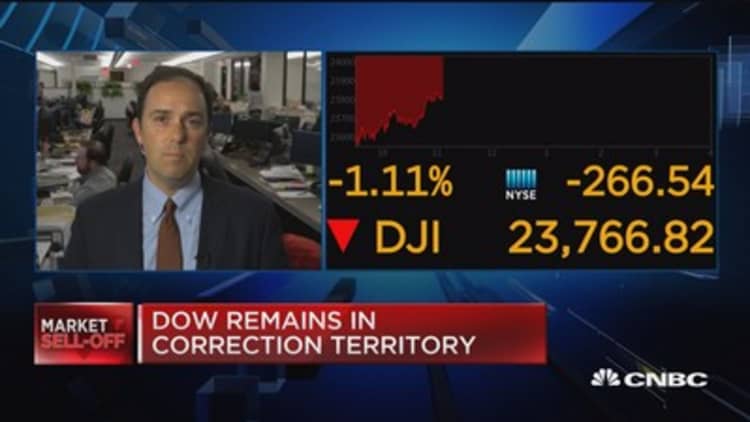
Stifel strategist Barry Bannister called this year's correction pretty much to the day, and he's got even more bad news.
Losers will be passive investors who will see returns fall away as the major indexes don't gain any ground, while winners will be active managers who pick stocks for a living. Managers had a solid year in 2017, while 57 percent beat their benchmarks in the first quarter of 2018, the highest level since the bull market began, according to Bank of America Merrill Lynch.
On Jan. 26, the head of institutional equity strategy at Stifel said in a research note said the S&P 500 was due for a correction, and he was right. The index topped that very day and has fallen an aggregate 8 percent since then as of Wednesday's close. But twice, it has been in correction territory, defined as a 10 percent decline.
On the bright side, Bannister said that for now he is sticking with his call that the index closes the year at 2,800, which implies 6 percent upside. But from there, things get ugly.
For one thing, 2019 is likely to bring a bear market, as he has stated previously. And then, for the decade after that, the market likely will trade sideways, the victim of overvaluation and a retreat from the Fed-fueled bull run that began back in 2009.
The overvaluation comes from looking at rolling price-to-earnings levels over the past 10 years (the "Shiller CAPE"), a comparison of market values to asset values (Tobin's Q), and the high levels of household stock ownership.
"Those three methods imply an abysmal outlook for the S&P 500 return from 2018-2027E and a bear market that probably starts within the next year," Bannister said in a report this week for clients. He noted that nonrecession "bear markets" have typically fallen 18 percent over the past 50 years, though a bear technically is defined as a 20 percent decline.
He also hit at the role that central banks will play for returns.
The Fed and its counterparts goosed the market with trillions in money printing, most of which was used to buy government bonds and inject liquidity into the market. However, policies are beginning to diverge, with the Fed ending its quantitative easing program and embarking on half a dozen interest rate hikes and more planned ahead.
"Central banks front-loaded equity prices," Bannister said. "The 'payback' is now a long, flat decade ahead."
Stifel has been telling its clients to move to more defensive market names as market stasis sets in.


